
09 Mind-Blowing Facts About Skyscrapers
Have you ever looked up at a skyscraper and felt amazed? These tall buildings are not just big; they're like giants holding up the sky. They tell us stories about what people can do when they really try. Skyscrapers are more than just steel and glass. They are signs of how smart and creative humans can be. In this article, we're going to find out some cool things about skyscrapers. We'll see how they're not just about being tall but about dreaming big and changing our cities. Let's start our adventure into the world of these giant buildings and discover the secrets they hold.
The Birth of the Skyscraper
A Chicago Story The story of the first skyscraper starts in Chicago, back in 1885. This wasn't just any building; it was the Home Insurance Building, and it stood out with its 10 stories. Today, that might not sound like much, but back then, it was a giant. What made it really special was its steel frame. This was a big deal because it changed how buildings were made, leading to the skyscrapers we see today.
Before this, buildings were limited in height because they relied on thick walls for support. But with a steel skeleton, buildings could reach higher into the sky without those heavy walls. This meant more space up top and less space used on the ground. The Home Insurance Building showed the world that cities could grow upwards, not just outwards. This idea sparked a revolution in architecture, making skyscrapers possible. It was the beginning of a new era where the sky became the limit.
This building in Chicago wasn't just a step forward in how we build; it was a leap into the future. It showed us that with the right ideas and materials, we can create something that reaches for the stars. This innovation has shaped cities around the world, making skyscrapers a key part of modern life and changing how we think about space in our cities.
Fig: Home Insurance Building, Chicago
Skyscrapers Can Trick the Wind
Skyscrapers aren't just fighting for space on the ground; they're battling the wind at incredible heights. Engineers use clever designs to manage this, like the Taipei 101 in Taiwan, which has a massive pendulum hanging inside it. This acts like a counterbalance, swaying to offset the wind's force. It's like a giant, silent dance between the building and the air around it, ensuring that skyscrapers stand firm against nature's push.
Fig: Taipei 101, Taiwan
Living High Up Can Affect Your Time
Here's a head-scratcher: if you live on the top floor of a skyscraper, time actually moves slightly faster for you than for people on the ground. Thanks to Einstein's theory of relativity, time moves more slowly the closer you are to the Earth's surface. The effect is minuscule, but it's true—residents of tall buildings age just a tiny bit faster than the rest of us. It's the ultimate high-rise living perk, or is it?
Hidden Gardens in the Sky
Let's meet Mia. Mia is someone who loves plants and buildings. She visited a very special building called Bosco Verticale in Milan, Italy. This building is not like others. It has trees and plants on every balcony. It looks like a big garden in the sky.
When Mia walked into the building, it was like she was in a park, not a city. The air felt fresh, and everything was quiet and green. She saw how buildings can be homes for trees and birds, not just people. Mia thought this was amazing. She learned that these green buildings make the air cleaner and help nature live in the city.
Mia's visit made her think about how all buildings could have plants. She dreamed of making cities greener and more beautiful. The Bosco Verticale showed her that it's possible to mix nature with city life. It made her happy to see a future where buildings help the planet.
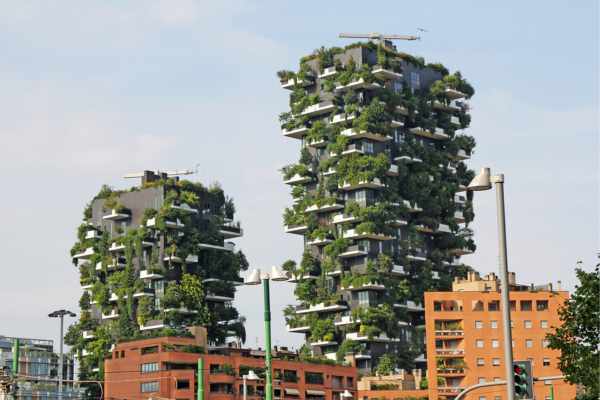
Fig: Bosco Verticale, Milan
The Race to the Sky
Competition Among Cities Cities around the world compete to host the tallest skyscraper, a symbol of prestige and innovation. This race has led to iconic buildings like Dubai's Burj Khalifa, currently the world's tallest. The competition drives architects and engineers to push boundaries, creating buildings that reach new heights, both literally and figuratively.
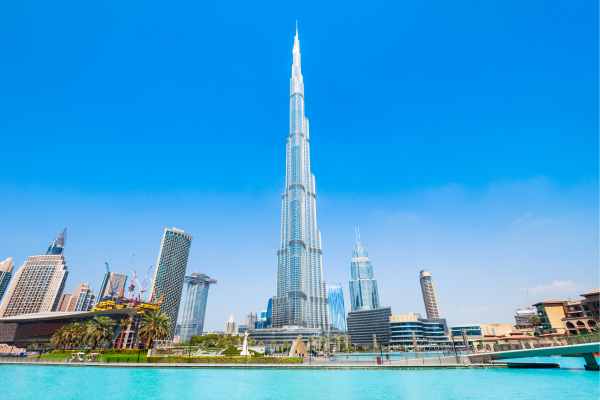
Fig: Burj Khalifa, Dubai
Earthquake-Proof Engineering Marvels
In earthquake-prone areas, skyscrapers are engineered to withstand the Earth's might. Innovations in design, like the use of flexible materials and shock absorbers, allow these buildings to sway safely during a quake. Tokyo's Skytree, for example, incorporates cutting-edge technology to ensure stability, showcasing how engineering can protect and preserve in the face of nature's challenges.
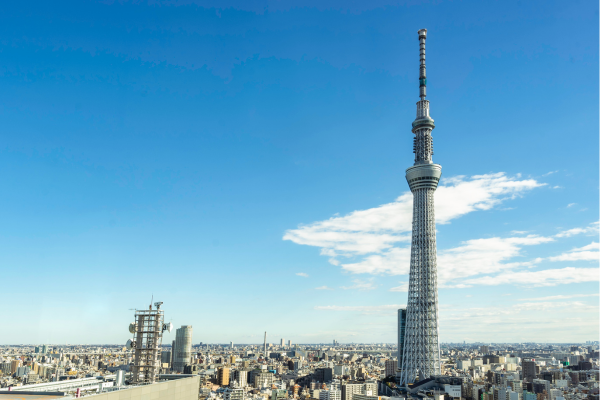
Fig: Tokyo Skytree, Japan
The Hidden Costs of Skyscrapers
Building sky-high isn't just about materials and land. Skyscrapers have hidden costs, including environmental impacts and the energy required for construction and maintenance. Architects are now focusing on sustainable designs, like the Shanghai Tower, with its wind turbines and rainwater recycling systems. These initiatives aim to reduce the ecological footprint of towering structures.
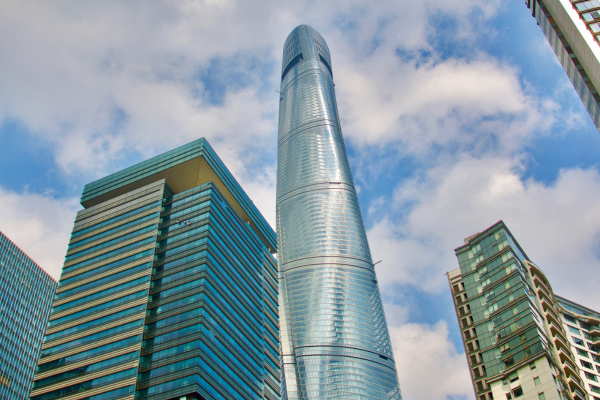
Fig: Shanghai Tower, China
Cultural Icons and Skyline Symbols
Skyscrapers are more than buildings; they're symbols of a city's identity. The Empire State Building, for example, isn't just an office tower; it's an emblem of New York City, featured in countless films and stories. These structures contribute to the cultural and visual tapestry of urban landscapes, embodying the spirit and aspirations of their cities.

Fig: Empire State Building, New York
The Deep Secrets Beneath Skyscrapers
Let’s dive into the fascinating world of skyscraper foundations, revealing that these towering structures are as deeply rooted in the earth as they are tall. It uncovers how engineers design foundations to anchor skyscrapers firmly against winds, earthquakes, and other forces, ensuring stability and safety for the urban giants. Through this exploration, we see the unseen work and ingenuity that keep these marvels standing strong.
Skyscrapers symbolize human achievement and cultural pride, connecting people and cities to their identities and aspirations. They are not just structures but landmarks that embody innovation, progress, and the relentless pursuit of reaching new heights, both literally and metaphorically. These towering icons reflect the spirit of their cities, showcasing architectural brilliance and the collective ambition of societies to transcend limits and shape skylines around the globe.
The future of skyscraper technology focuses on smart buildings, integrating sustainable designs, and advanced materials for energy efficiency and environmental impact reduction. Innovations like vertical gardens, energy-generating windows, and intelligent systems for climate control and security are expected. These advancements aim to make skyscrapers more self-sufficient, reducing their carbon footprint and enhancing the quality of urban life.
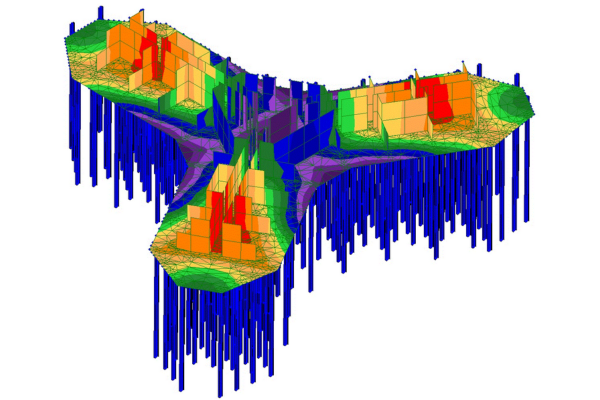
Fig: Burj Khalifa foundation structure
We explored the marvels of skyscrapers, from their engineering feats to their cultural significance. We've seen how these towering structures are inspired by nature, advance with smart technologies, and impact our lives and environment. Looking forward, skyscraper design is poised to further revolutionize urban landscapes, blending sustainability with innovation to create spaces that are not only architecturally stunning but also environmentally responsible and culturally resonant, shaping our cities and lifestyles for generations to come.
Building skyscrapers is a big job. BidLight helps with BIM services to plan better, from finding the right materials to managing workers. It's perfect for complex projects. See how BidLight can make your building project smoother at bidlight.com.

